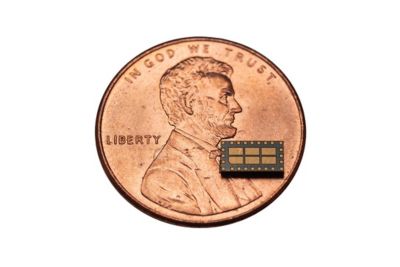-
United States -
United Kingdom -
India -
France -
Deutschland -
Italia -
日本 -
대한민국 -
中国 -
台灣
-
Ansys는 학생들에게 시뮬레이션 엔지니어링 소프트웨어를 무료로 제공함으로써 오늘날의 학생들의 성장을 지속적으로 지원하고 있습니다.
-
Ansys는 학생들에게 시뮬레이션 엔지니어링 소프트웨어를 무료로 제공함으로써 오늘날의 학생들의 성장을 지속적으로 지원하고 있습니다.
-
Ansys는 학생들에게 시뮬레이션 엔지니어링 소프트웨어를 무료로 제공함으로써 오늘날의 학생들의 성장을 지속적으로 지원하고 있습니다.
ANSYS BLOG
October 21, 2020
Nikola Labs Thrives with the Help of the Ansys Startup Program
As the number of Internet of Things (IoT) devices continues to grow, engineers are trying to develop wireless charging methods to make recharging of consumer and industrial devices easier. Nikola Labs in Columbus, Ohio, is working on the industrial side of this challenge.
A participant in the Ansys Startup Program, Nikola Labs was founded in 2015 at Ohio State University based on the ideas of Professor Chi-Chih Chen involving transfer of power through radio frequency (RF) electromagnetic waves transmitted between antennas.
Ansys highlights Nikola Labs as we celebrate achieving 1,000 Ansys Startup Program members.
The company now has about 30 employees dedicated to providing an end-to-end solution for remote machine condition monitoring. Machine health is measured using an ultra-low power receiver comprised of a temperature sensor and accelerometer. While the receivers currently operate in the field for long periods of time on a single battery charge, they could eventually benefit from the wireless power technology that Nikola Labs is developing.
Nikola Labs' Vero system takes accelerometer data gathered from its receivers
(the four smaller units) that are placed on industrial equipment
and sends the data to a hub. The hub then sends the data to the cloud
where it is processed. The hub also delivers wireless power to the receivers
to recharge their batteries.
Engineers at Nikola Labs used Ansys HFSS 3D electromagnetic field simulation solutions as students and were keen to use it in their jobs because of its high accuracy and because they were so familiar with the software.
“As a startup we knew we needed HFSS, but it was always a cashflow problem, especially early on, so we were wondering how we were going to pay for it,” says Chief Engineer Roland Tallos, who has been using HFSS for about 8 years, starting in grad school. When their vice president of operations discovered the Ansys Startup Program in 2017, “it almost sounded too good to be true,” Tallos says. “It really is quite a deal and we've been very fortunate to have it these past three years — it's allowed us to get done the things we need to get done without having to put out huge amounts of capital upfront.”
Wireless Data, Wireless Power
Their discovery of the Ansys Startup program came at just the right time. After a couple years of exploring potential applications for their technology and building prototypes for several companies, in 2017 they hit upon an application that became their main focus: industrial sensors for monitoring the condition of equipment (usually motor housings or bearing housings) through vibrational analysis. Each sensor is essentially a receiver that has an accelerometer on it. It collects accelerometer data and converts it into vibration data, which experts can review to tell how a machine is doing.
The main problem with existing sensors is battery life — maintenance people are spending too much time replacing batteries on top of machines that are often in difficult-to-reach areas.
Nikola Labs' RF-to-DC system-in-package (SiP) takes the RF energy captured by an antenna and converts it to DC power. It then boosts the voltage and handles charging a battery or super capacitor, as well as delivering regulated power to the system.
“The goal of what we are developing is to marry the sensor with our wireless power technology so we can do two things — provide the data wirelessly and provide wireless power to the sensors to have them last maybe 10 years or so,” Tallos says.
An Ansys HFSS model of the meandered dipole antenna around an NFC antenna.
A major challenge is that customers always want the system to be smaller. With the transmission power being relatively low and of a fixed value, the biggest impact the engineers can produce is on the performance of the harvester's antenna on the receiver side.
Simulation Speeds Antenna Development
“Being able to rapidly simulate different antennas using different techniques, different designs— that is the bread and butter for me and the other RF engineers on the team,” Tallos says. “Iterating quickly is where HFSS really shines.”
About five years after their founding, the company’s efforts are paying off. Nikola Labs now has 40+ customers and 90+ facilities, with numbers growing all the time. Currently they are monitoring over 700 pieces of equipment, and have collected over 32 million readings to date. They credit the Ansys Startup Program for some of this success.
An Ansys HFSS simulation of the 3D radiation pattern of a dipole antenna when it is mounted on top of a bottle.
“Ansys is helping young companies when they really need help the most to get their feet underneath them,” Tallos says. “As a startup, you're always racing against the clock because you only have so much funding and you always have a lot you have to get done quickly, so time is the biggest benefit of the Startup Program.”
Check out the Ansys Startup Program for more details on how your company can participate.















